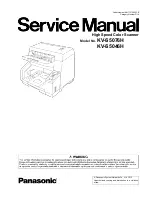
Page
20 D-LX
100
10.9. Cable and Shielding
The D-LX 100 is designed for the connection of 230 VAC via the fault contact and flame contact, while
the system operates in the low-voltage 24 VDC range.
If the contacts are to be used in the ”high-voltage” 230 VAC range, either an appropriately insulated
cable must be used to cover the entire distance from the flame scanner, or a distributor panel needs to
be installed, with separate cables used after it.
Shielding, if needed at all, is only required for the current output because the internal voltages of the
flame scanner (0V and 5V) lead out from the flame scanner via this output.
Recommendation:
Separate 3 high-voltage conductors and a protective ground as early as
possible (up to 5m) from the low-voltage line and then lay 2 or 3 separate cables over greater
distances:
D-LX 100
8
LX
10
0-
07
-0
04
1 wire PE
3 wires for relay contacts (q1)
no shield necessary
max. 5m Silflex cable,
unshielded,
230 VAC applications
8 x 1mm
2
Junction box
2 wires for 24 VDC supply (q2)
shield may be necessary
2 wires current output (q3)
shield necessary
(Fig. 12)
Cable and Shielding
Diameters q1 and q3 can be determined by conditions on site.
Diameter q2 must be great enough that resistance per conductor does not exceed
R= 10
Ω
. The
D-LX 100 operates then at 24V - (200mA x 2 x 10
Ω
) = 20V still permissible.
The D-LX 100 is constructed potential free. There is no connection between power supply and
grounded housing. If the flame monitor stops operation because of a flame sensor-error (red and
green LEDs flash) this potential separation may be responsible for that.
In that case a capacitive connection of C1= approx. 100nF or a direct connection B1 may help (but
with B1 you loose the separation of potentials!)
L+
L -
C1
B1
LX
10
0-
10
-0
03
D-LX 100
7
8
PE
Power
supply
Viewing
pipe
Boiler
(Fig. 13)
Power supply and error suppression













































